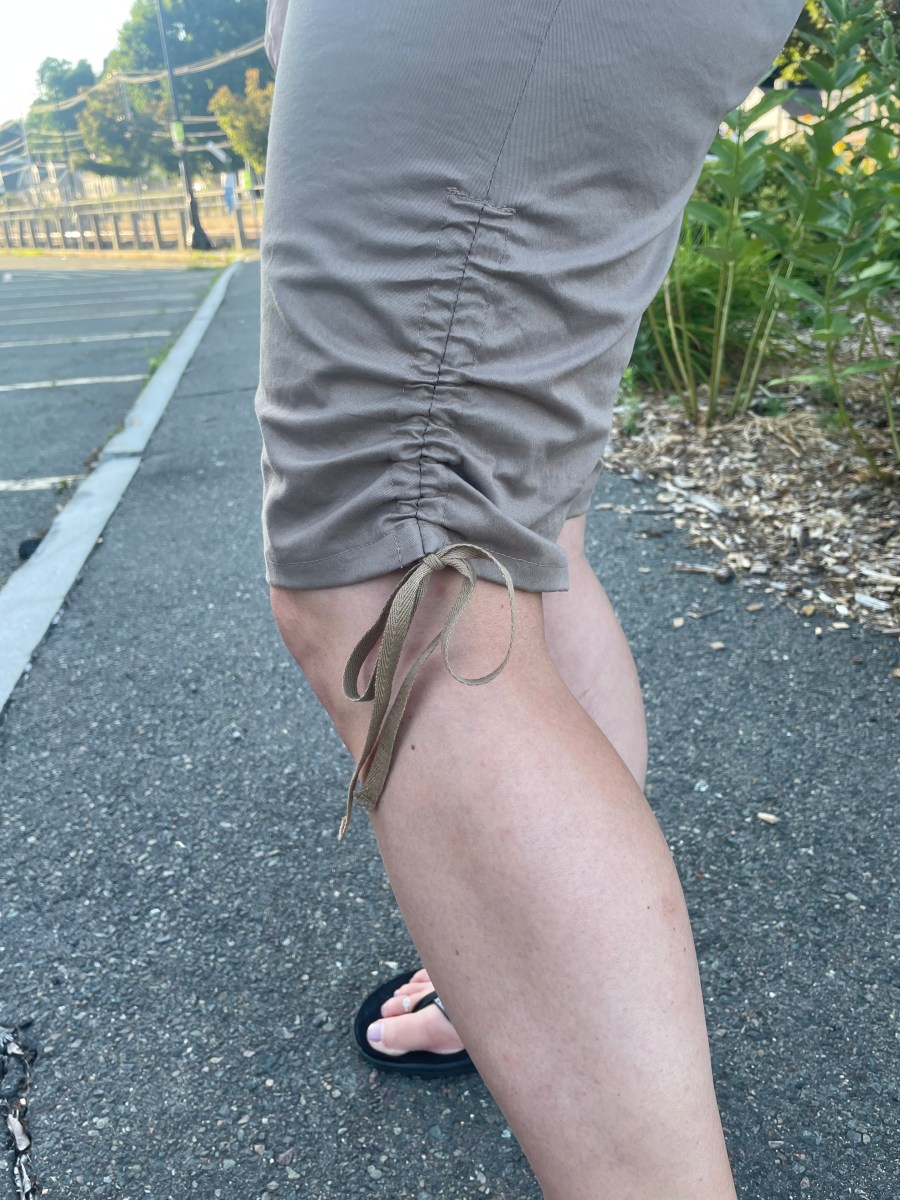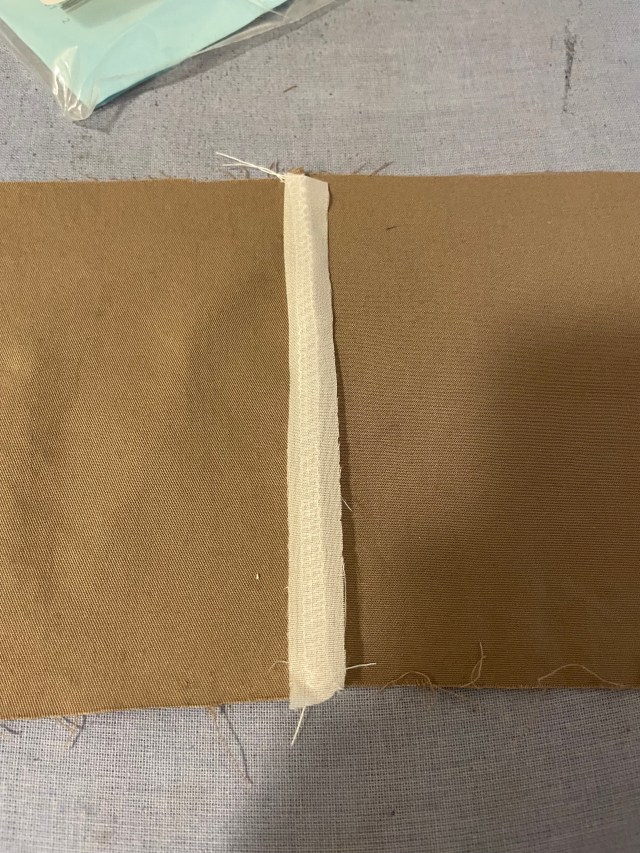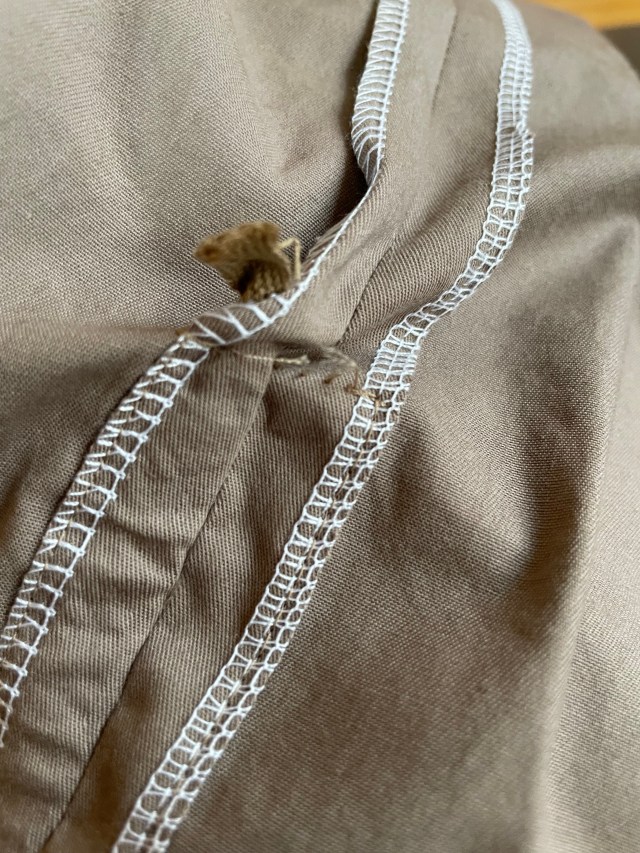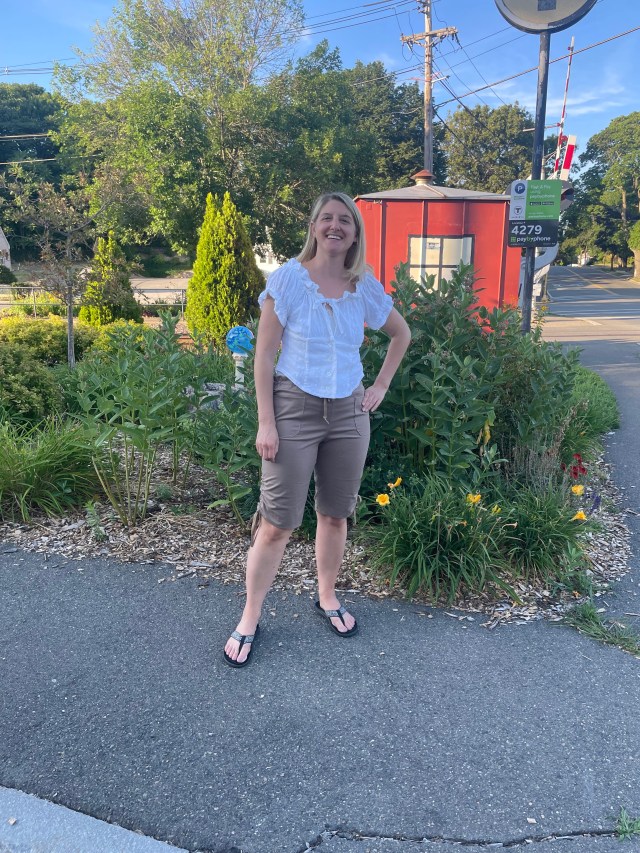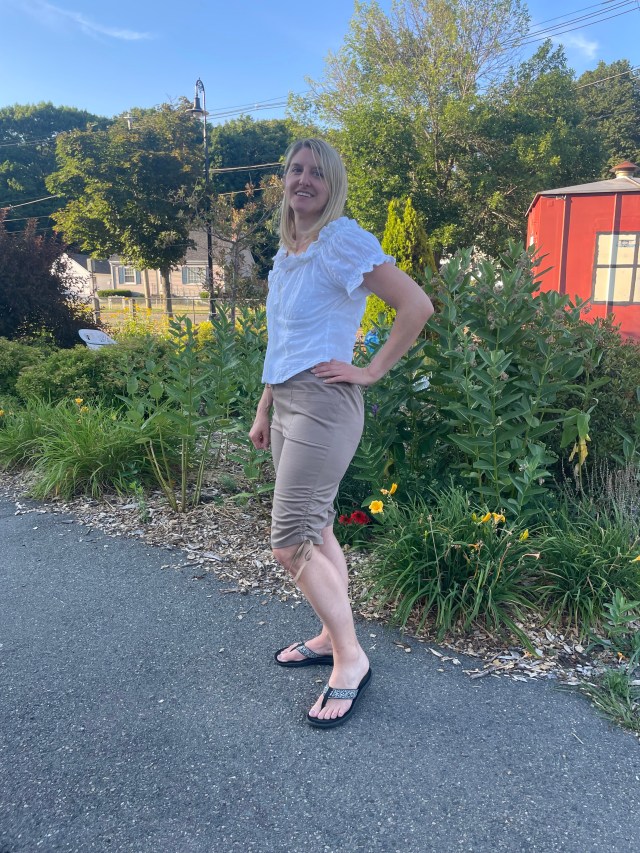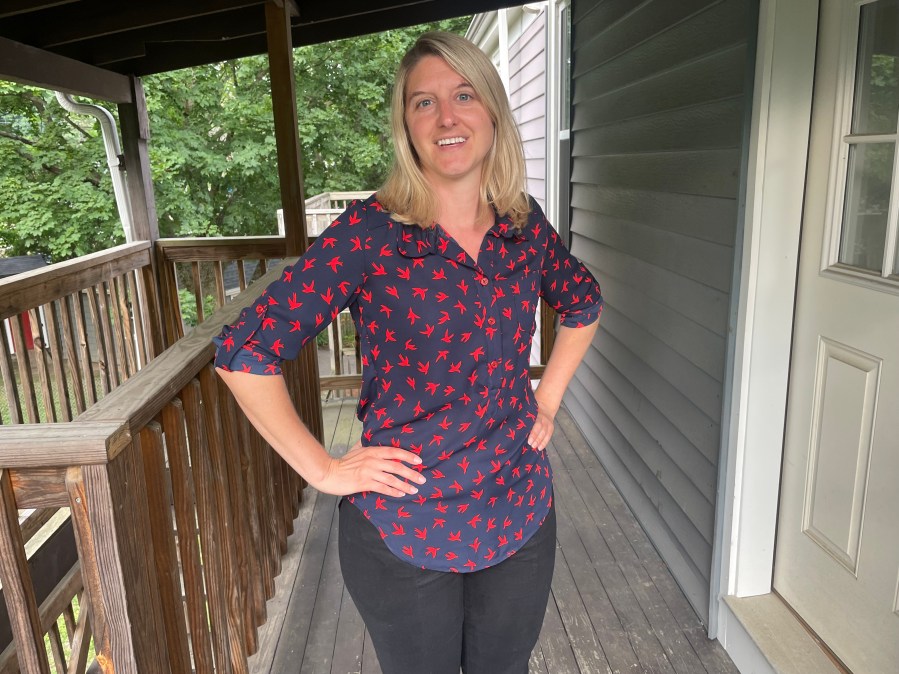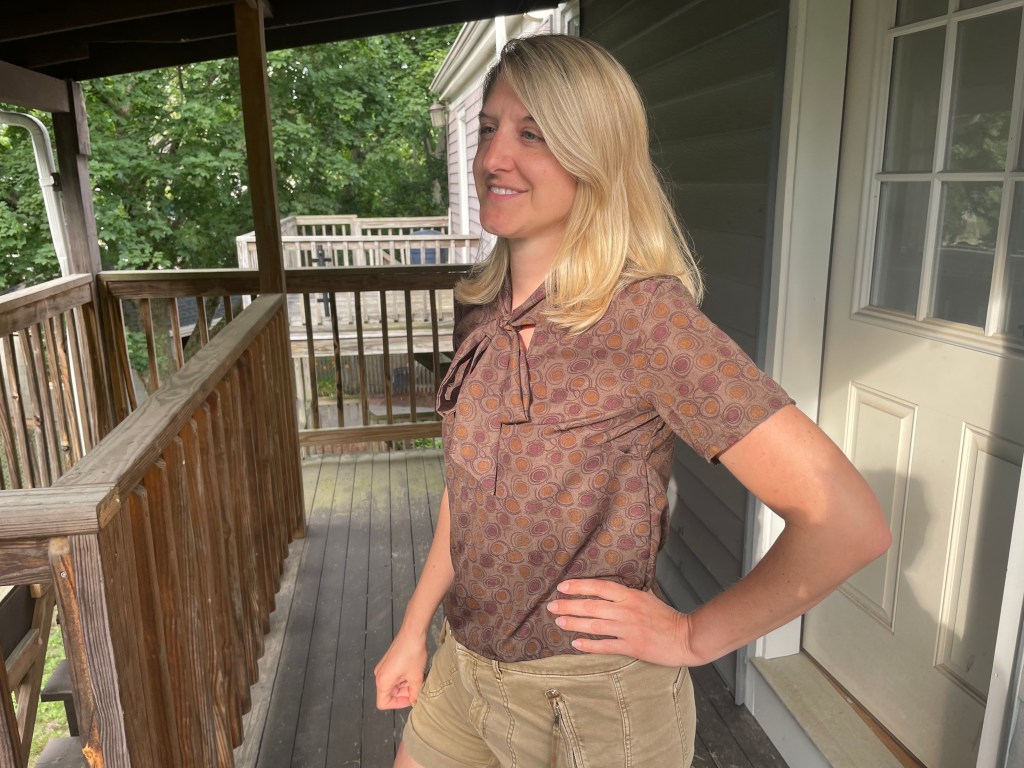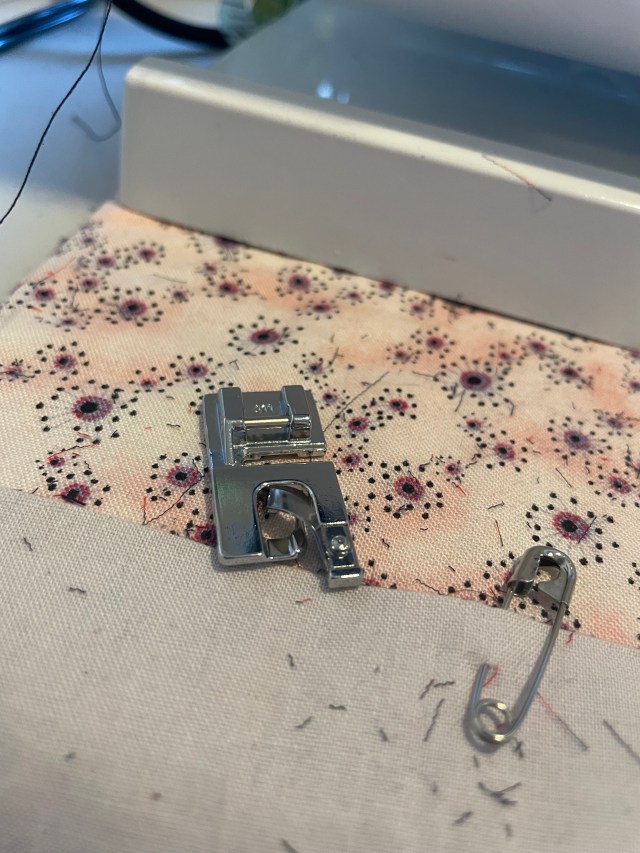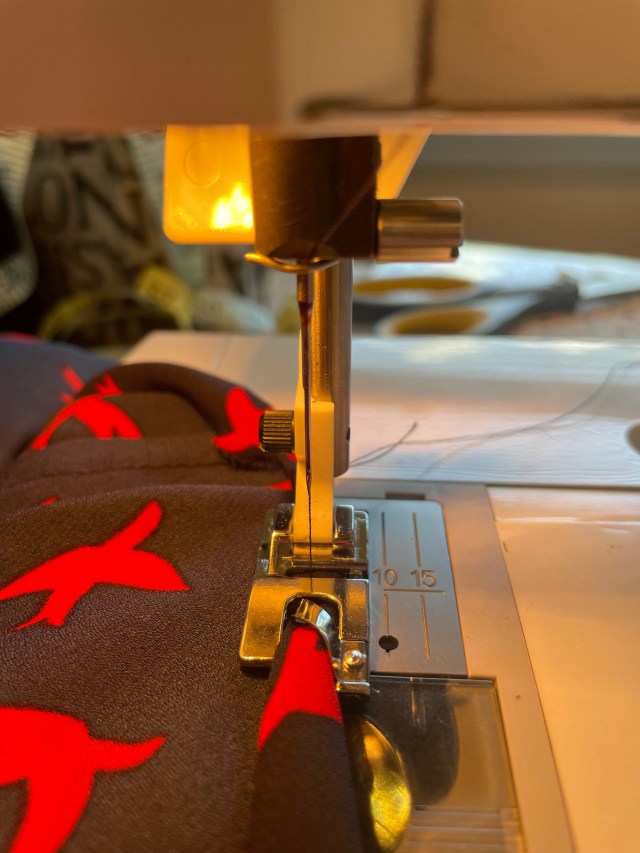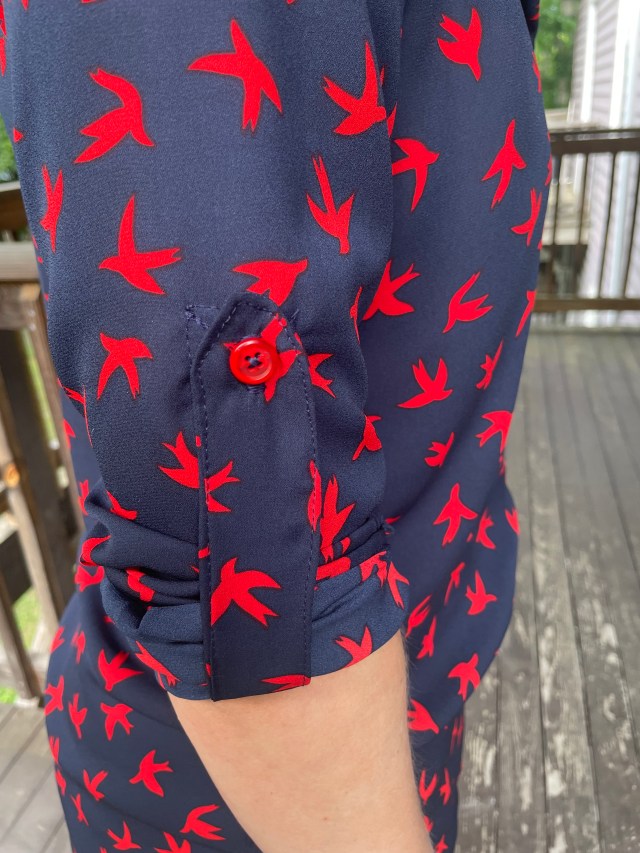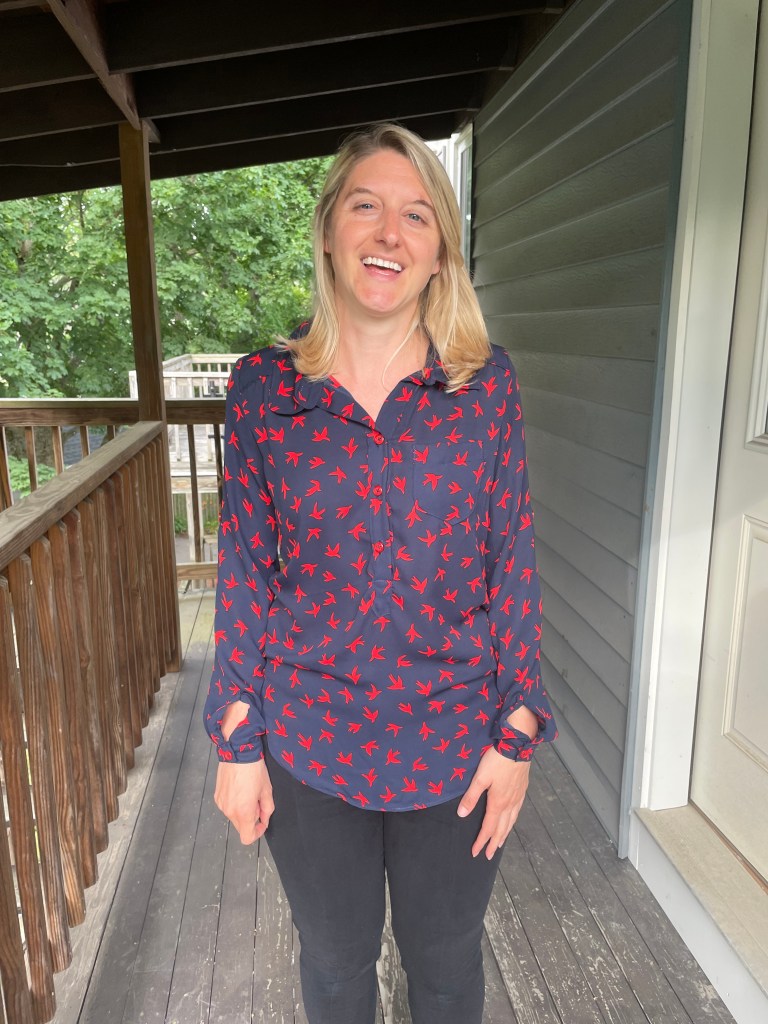Pattern: Simplicity 2414
It’s time for another wardrobe builder and this time it’s for capri or three-quarter pants. I really like this style of shorter pants with the cinches up the side as I have a pair I purchased that I like to do light hiking in. The only problem with this pattern is that view C is technically shorts, even though they don’t look like it in the drawing. I ended up lengthening these a bit so they were more like capris, although the length is still on the shorter side. As is, they were a bit long for actual shorts anyways.
The pattern promises you can make these in an hour. I’m not sure I am that skilled – I mean cutting these out alone takes over a half hour including set up. However they did sew up fairly fast as I was able to sneak away on lunch breaks and after work to get these done.
One of the things that tends to frustrate me about the Big 4 patterns, is that I sometimes come across directions that don’t make sense to me at first glance. On this pattern, it was telling me to keep the twill tape from getting stuck in the seam allowances when it’s inserted (into the waistband), use fusible web or machine basting to anchor “them” to garment within the casing area. It seems obvious now, but I was confused by why I would need to anchor the twill tape by basting it. Then I realized after re-reading the awkward sentence, the twill tape could get caught if I had sewed the waistband up with a regular unfinished seam. Since I had used a serger, I didn’t have giant seam allowances, but I did decide to iron some stay tape so the seam stayed flat. This would hopefully allow a smoother ride for my twill tape drawstring, around the waist.
Another issue I had was making the casing on the side of the legs. The drawing made it look like I would sew a box for a casing before I inserted the twill tape with a safety pin. With the top of the casing sewn up, I had no way of removing the safety pin at the top so I could sew the twill tape in place. I finally had to undo the stitching to get the tape to come up to the top edge and then I sewed it in place to close up the casing. I’m not sure why this wasn’t described this way and the drawing seemed to show sewing this casing first. I’m baffled to how this would work, doing it this way.
This was a good first attempt with some practice fabric. Finding matching twill tape will probably be the biggest difficulty in making these again, as it was hard to even find a normal beige for these. If I do remake these, I think I would make the waist one size smaller and maybe do some adjustment on the crotch seam. I think the chances are good I will re-make these, maybe even a different view. These simple pants seem to have a lot of versatility and were very easy to make.

